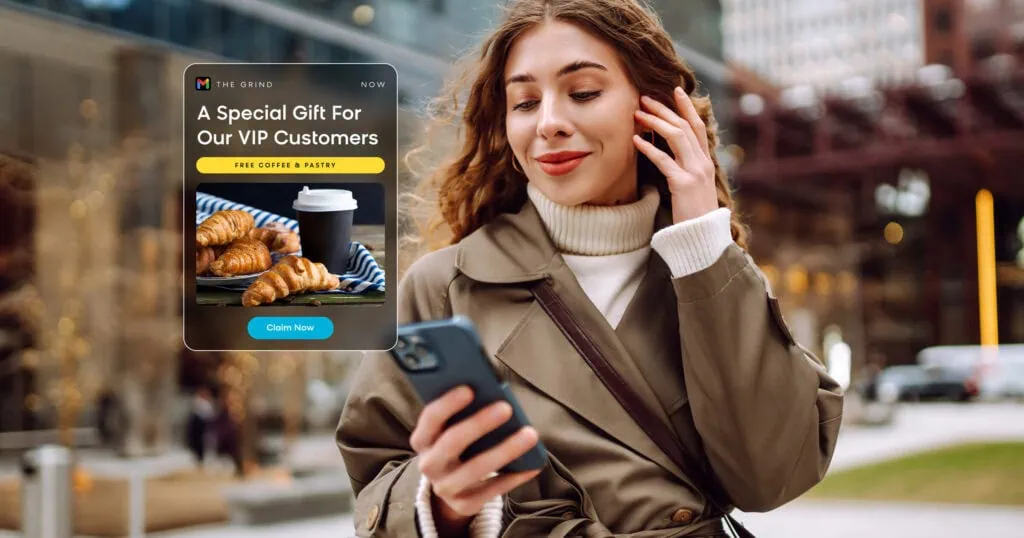Google announced that it will stop the use of third-party cookies in Chrome by the end of 2023, joining a growing list of browsers ditching the “privacy-invading” technology. In this article, we will discuss the ways in which zero-party data can be used to gather data and increase the loyalty of your customers at the same time. But before we go into this, we first provide some information about the way in which data is collected online.
First-, Second-, and Third-Party Data
The way of tracking and collecting online customer data is divided into first-, second-, and third-party data.
First-party data is data derived from your own systems, channels, and sources. This data contains all information about customers and visitors to your site that you collect and combine yourself. This data varies from name and address to online behavior. Some companies sell their data to other companies. A reason could be that they know a lot about a specific customer group due to the nature of their company. When you buy first-party data from another company, this data becomes second-party data.
Third-party data is data gathered by third parties like an AdTech company, such as Google. Third-party data providers can tell you all about your target groups. The big advantage of this kind of data is scale: with third-party data, you can learn a lot about the behavior of (potential) target groups. Third-party data is gathered with the use of third-party cookies. For example, you can have a “like” button on your website which will store a so-called “cookie” on a visitor’s computer. You can look at this as a capsule of information about the visitor. The cookie can later be accessed by Facebook to identify for example which websites the visitor has visited.
This explains why you encounter the exact same shoes on Facebook that you just clicked on at an online sneaker store. Until now, this type of data has been playing an important role in the marketing strategy of companies.
However, because Google announced that it will phase out the gathering of third-party data in Chrome by the end of 2023, companies have to search for another strategy to connect with their customers. By doing this, Google is joining a growing list of browsers ditching the “privacy-invading” technology. But what is the solution to this phaseout?
The Solution: Zero-Party Data
With Google phasing out third-party data, it will only become harder for companies to collect online data from their customers and use this data in their marketing strategy. To prevent this loss of customer data, a company can make use of another type of data: zero-party data. This is data that a customer intentionally and proactively shares with a brand. We often see zero- and first-party data being confused with each other. Whereas first-party data is gathered passively via customer interactions, users intentionally hand over zero-party data.
Zero-party data can include preference center data, purchase intentions, personal contexts, and how the individual wants to be recognized by the brand. The advantage of zero-party data is that since it’s provided by the customer, a brand doesn’t have to question the source. Additionally, it is freely given by the customer to the company, so there are no concerns about how the data is acquired.
A good zero-party data strategy eliminates the creepiness — because the data is collected freely and directly from the customer — and eliminates the guesswork in customizing consumer experiences. It also helps companies measure and build trust with their customers.
The Importance of Loyal Customers
As mentioned above, zero-party data helps customers measure and build trust with their customers. But why is this so important?
Nowadays, customers not only expect high-quality products and excellent service, but also relevant offers and personalized content that is tailored to their needs. Customers expect brands to listen, understand, and anticipate their needs with valuable suggestions throughout the entire customer journey. To build a lasting relationship with your customer, it is important to create a 360-degree customer view, know your customers’ needs and values, and act on this information.
Next to the advantages for the customers, companies also benefit when customers are becoming loyal. Acquiring a new customer is at least five times more expensive than retaining an existing one. In addition, it can lead to a five-percent increase in annual revenue, because loyalty drives up customer lifetime value. Furthermore, eight out of 10 customers who are loyal to a brand promote this brand among family and friends.
Making use of zero-party data as part of your customer loyalty strategy could be seen as killing two birds with one stone. On one hand, a brand is strengthening the loyalty of its customers. On the other hand, the loss of customer data due to the phaseout of third-party data will be replaced with valuable data obtained in a matter that respects the customers’ privacy.
Inserting Zero-Party Data Into a Sustainable Loyalty Model
To be able to insert the gathering of zero-party data into a loyalty strategy, one should know how to come up with a strong strategy.
In the article “Six-step approach to building sustainable customer loyalty,” a comprehensive explanation about how customer loyalty adds value to your company and in what way this strategy can be built up can be found.
A business could also use a zero-party data collection banner to ask customers for any preferences they’re comfortable with sharing. By creating a newsletter or offer tailored to those preferences, companies can drive repeat purchases.
That same zero-party data can also be applied to loyalty programs by offering special rewards that are in line with the personal needs of the customer.
Zero-Party Data in Action
To see zero-party data in action, let’s take a look at My Jewellery, a clothing and jewelry retailer based in the Netherlands. The company wanted to create a more customized experience for loyal customers while respecting their data privacy, so it created a “style profile test” that let the customers select which pieces they liked or didn’t like. This resulted in a unique style profile for each customer.
When My Jewellery sent emails personalized to these style profiles, the company saw a 20% increase in email open rates. Connecting these kinds of initiatives to your loyalty program by providing for example points for every preference that the customer is sharing causes the gathering of zero-party data to be beneficial for both company and customer. The approach is successful when both the company and the member benefit via true value exchange!
If you’re wondering how you can implement zero-party data within your own organization, be sure to check out the Definitive Guide to Ecommerce Personalization. This guide, full of tips, tricks, and examples, gets you started in the world of customer personalization.
As acquiring new customers becomes more difficult, companies should focus on their existing customers. By applying techniques to collect zero-party data as shown in the examples above, companies are able to find new ways to support their customer engagement strategy. Ultimately, this will drive an increase in profits and customer satisfaction.

















